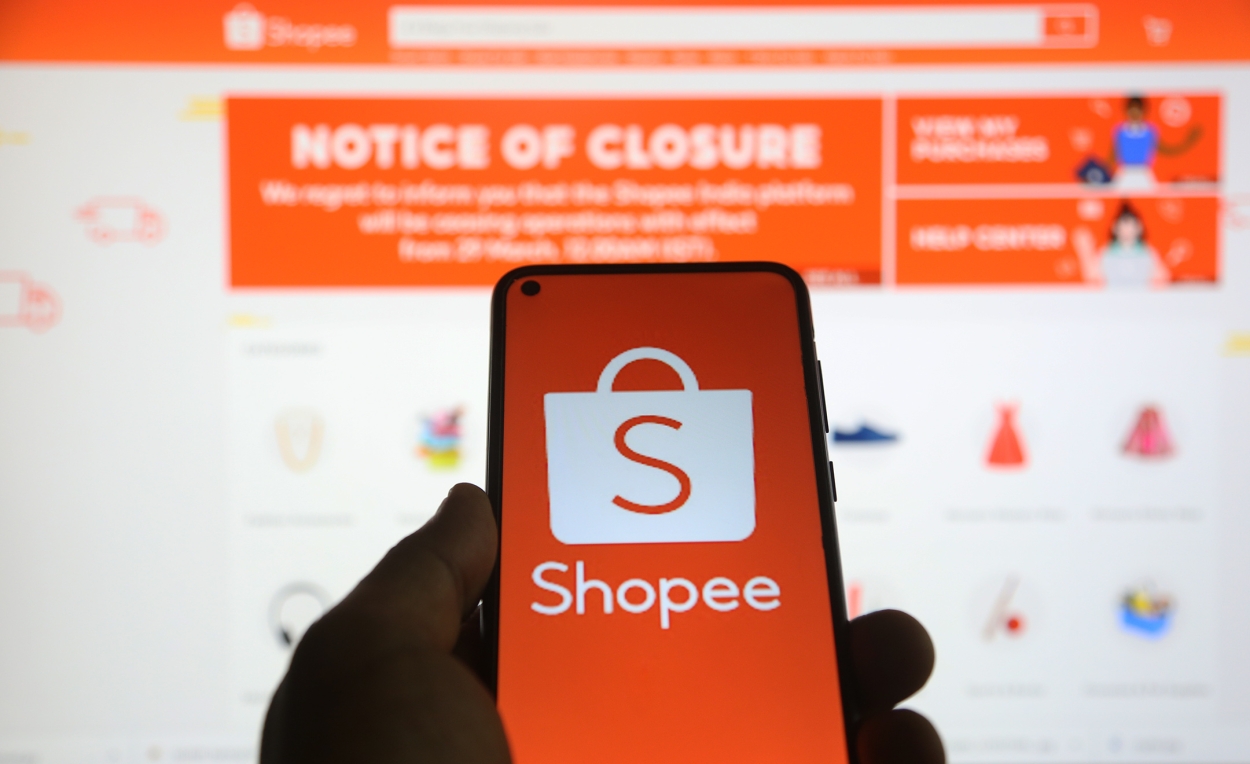Just three weeks ago Sea Limited threw in the towel in France, removing Shopee from what the company called a “pilot” in the Western European country. When it announced its ventures into Spain and France last autumn, I expressed my skepticism due to much higher customer acquisition costs and continuing supply chain problems that are decidedly not conducive for shipping cheap goods to Europe all the way from Asia.
As a result, when Sea pulled the plug on their French venture that I didn’t think it really mattered. They seemed to have just been testing the waters.
This time, however, Shopee has announced its departure from one of the largest markets of all – India. And that’s a problem.
You see, unlike the developed West, India has the model market profile for Shopee – which has been the e-commerce app of choice in other developing nations in Asia and Latin America.
Sea has identified a market segment for low-cost goods among people who remain largely underserved in e-commerce retail.

They don’t have much money to spend yet but their disposable incomes are rising quickly, their societies are rapidly urbanizing and, as such, despite some existing competition, they form an excellent ground for continued growth for many years to come.
India is a particularly attractive market given its enormous size an prospects extending decades into the future.
Getting a strong foothold there would also allow Sea to continue its quantitative expansion, adding millions of new customers with relative ease. Given that Shopee is already present in other highly populous countries, India was really the last highly attractive holdout for the company to conquer.
Nowhere else did it have a perspective to grow this quickly, having hundreds of millions of increasingly willing buyers to reach.
Alas, its foray into the subcontinent has ended with a humbling defeat – though not purely for market reasons.
Under fire
The company said in a statement that the withdrawal is motivated by “global market uncertainties” and added that “the decision regarding Shopee India has nothing to do with regulatory matters” – referring to the ban on its enormously popular mobile action game Free Fire.
The game was removed from online stores in India after a purge targeting apps that were considered to have links to China in the middle of February this year, as a part of an ongoing geopolitical standoff between the two most populous countries in the world (despite the fact that Sea Limited is a Singaporean company, after all).

It also faced added pressure from Indian retailers protesting what they alleged was unfair practice of offering unrealistic discounts to rob local merchants of their earnings – what Sea has repeatedly denied.
However, despite ongoing controversies, Shopee has been growing its share of e-commerce traffic, with its website growing nearly three-fold between December, to over nine million visits in February – equivalent to about three per cent of traffic to Amazon.in and over five per cent to local Flipkart.com (in which Walmart holds a majority stake).

While these figures may look small in comparison, you have to remember that Shopee only entered India in October and has spent subsequent months dealing with controversies stemming from allegations of Chinese-ownership (in part leading to partial divestment by Tencent) – a highly sensitive matter in India.
At its current trajectory it’s quite likely it would have grown its share to 20-30 million monthly visits – or more – giving it a few hundred million per year, and millions of orders.
Even if they didn’t generate a profit they would boost the company’s user base, showing investors that it is growing in one of the most promising and largest markets in the world.
At this stage, after all, it’s not the profit that Sea is chasing but growing market share.
For companies like Sea, proof of traction in getting more people onto the platform is often more valuable than net positive financial figures, since the most valuable asset is access to and trust of millions of customers. You can then figure out how to monetize it profitably in the future (and Sea has fairly deep pockets after raising close to US$9 billion last year).
Why is Shopee leaving?
I believe it’s precisely the issue of access to millions of users that led Sea to withdrawal of Shopee from India – not the global “uncertainty” that it mentioned in its statement.
Contrary to company’s reassurances, I think it’s the ban on Free Fire that derailed a good part of its strategy for the market, rendering it both more expensive and uncertain, forcing Sea to pull the plug.
How does Free Fire matter? Isn’t it just a game?

Yes, but as I pointed out in one of my past articles, Shopee typically leveraged the success of Free Fire in its subsequent launches in new markets. Popularity of the game gave Sea access to hundreds of millions of gamers of all ages, to use for cross-promoting its e-commerce platform for special deals and other promotions, building on the recognition and trust established with the game.
Since India’s February ban of Free Fire – which was enormously popular in India and consistently ranked either at or close to the top spot for game downloads as well as among the top grossing games – it has not only cost Sea millions of dollars in lost revenue but also access to millions of users.

Couple that with negative public relations (PR) and the company was looking at an uphill struggle, which has also put Shopee itself in regulator’s crosshairs, since the app could one day be banned from the country as well. After all, not even the global phenomenon TikTok has escaped the axe.
What incentive did Sea have to continue pumping millions (or, by some reports, even billions) of dollars into India if the national regulator could just shut it down one day, long before it could turn a profit?
This combination of internal factors – negative PR, ban on its top-grossing game and, as a result, a potential risk of a similar fate of Shopee – have all made it an exceedingly risky endeavour for Sea, despite the huge attractiveness of the Indian market.
There’s nothing worse for a business than uncertainty. And if it involves a potential overnight ban on all activity, it simply defeats the purpose of any investment.
Even if they are losing money in initial stages, businesses can accept the losses if they operate in a predictable and politically stable environment, knowing they may turn a profit eventually. Any country where courts or political elite can make off-hand decisions which could wreck years of work may not be worth the risk.
Sea has clearly calculated this was the case with India.
What’s next?
The significance of the move cannot be overstated, since Sea did take its time to recruit local sellers onto the platform and clearly wanted to make Shopee a success on the Indian subcontinent, grabbing a piece of a strategically important e-commerce market.
The decision to withdraw from it surely has not been taken lightly since it cannot be easily reversed.
It’s quite inconceivable to think that the app could return there in a year or two, since a lot of the trust has already been broken and both sellers and buyers might not be willing to give it another shot only to be left out in the cold if the company winds down after a few months again.
It could have been better to remain even in some small form there rather than completely exit the country – but it seems that the risk was not worth it anymore. Perhaps avoiding an outright ban on Shopee, the company is banking on better political atmosphere in the future.
Shopee was expected to grow by 76 per cent this year – it’s not certain how badly the exit from India will affect these projections. Optimistic projections must have taken considerable growth in terms of both users / downloads and orders there, so we can expect a correction next quarter.

Given the global economic situation, which has also led to a collapse in stock prices (with Sea losing about 3/4 of its value from peaks six months ago) it seems that expansion into new markets has to be put on ice.
The company has enough money to keep it going for a few years (even as it keeps reporting losses), after topping up its financial reserves with funds raised last year.

But excess risk and significant one-time capital outlays are probably off the table, because seeking new capital in this situation would be too expensive.
As a result we can expect Shopee to stick to its current territories, trying to improve its profitability as Garena’s pandemic growth – which is the core source of financing of money-losing e=commerce – has slowed down significantly since people are now spending less time at home after two years of lockdowns.
The company’s Indian adventure is certainly not over yet but it may take a few years before it tries to get a foothold there again. Meanwhile, we can expect it to make sure it doesn’t lose what it already has.
Featured Image Credit: Fortune India









